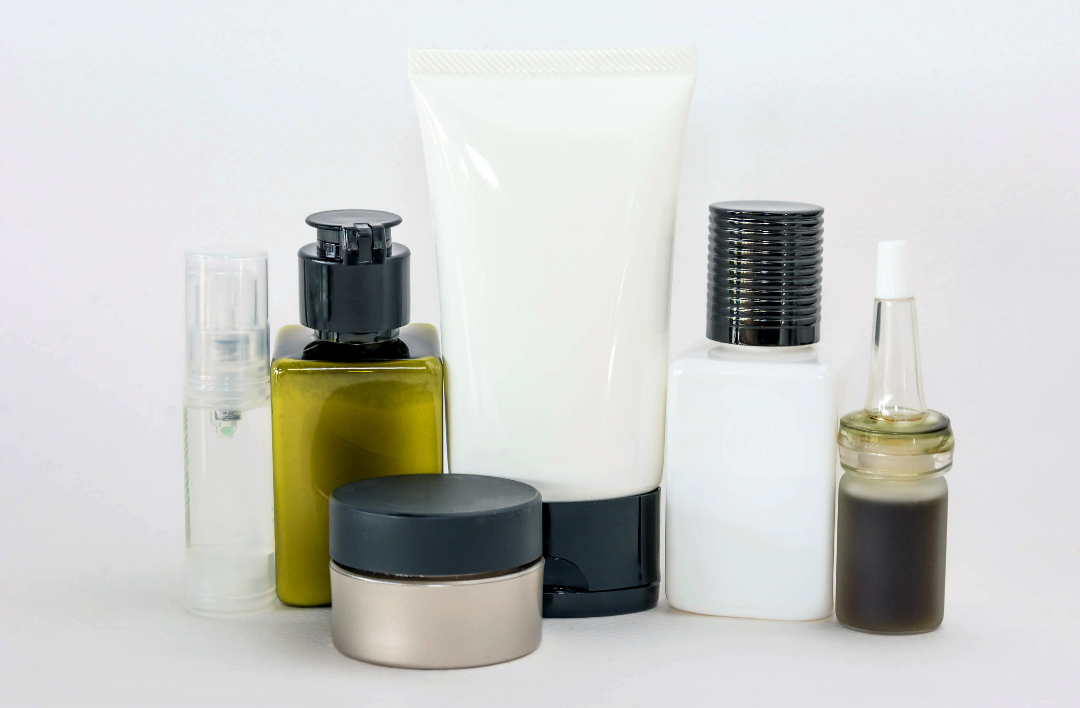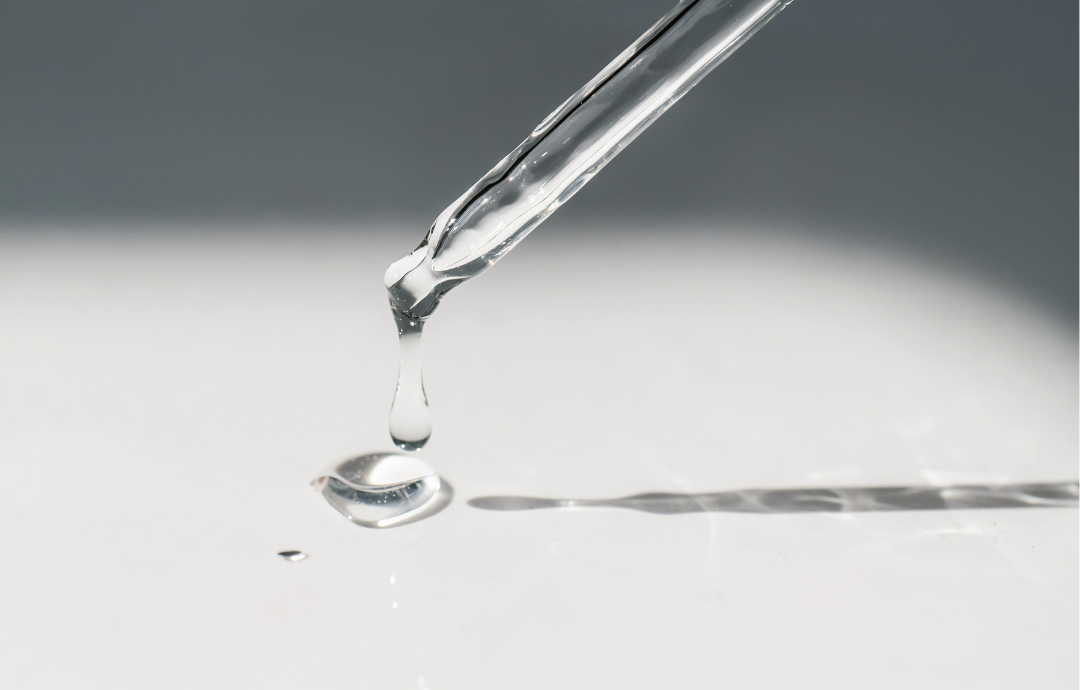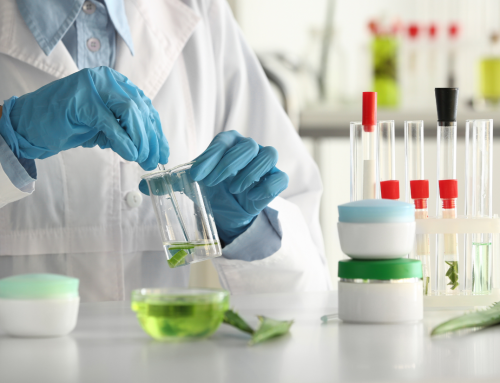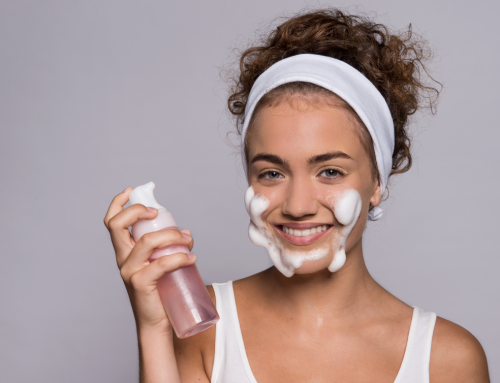Trends in Cosmetic Packaging: Sustainability, Technology, and Sensory Experience
The packaging of a cosmetic product has evolved beyond being a simple aesthetic element to become a key tool for differentiation, added value, and consumer connection. Today, in an increasingly saturated and competitive market, packaging is an essential part of brand strategy, positioning, and overall product experience. It’s no longer just about containing or protecting the contents, but about telling a story, conveying values, creating sensations, and facilitating purchasing decisions. An attractive, functional package aligned with consumer expectations can make the difference between a product that goes unnoticed and one that captivates in seconds. For brands operating under an OEM/ODM model, like those we support at MS Cosmetics Lab, innovating in packaging isn’t just an option: it’s a necessity to stand out, build loyalty, and increase sales. From sustainable formats to smart designs that enhance the sensory experience, strategic packaging development is an investment that directly impacts quality perception, brand recall, and repeat purchases. In an environment where everything communicates, packaging becomes the first emotional connection with the customer and a powerful sales driver.
Eco-friendly Packaging and Innovative Materials in 2025
The rise of eco-packaging has triggered a profound transformation throughout the cosmetic value chain. Beyond design, R&D, logistics, and marketing departments must coordinate to ensure packaging is environmentally friendly at every stage, from raw material sourcing to final disposal.
Emerging trends include:
• Refillable capsule-type packaging that reduces waste by up to 60% per product
• Eco-friendly water-based dyes as alternatives to conventional, highly polluting pigments
• Biodegradable labels printed with vegetable-based inks and natural adhesives
At the industrial level, some suppliers are developing blockchain platforms to verify the authentic origin and recyclability of materials, offering transparency in packaging traceability.
Furthermore, there’s an evolution in B2B consumption: international distributors now require their supplier brands to have active packaging sustainability policies, creating a clear competitive advantage for those who have already made this adaptation.
What Today’s Consumer Demands
Modern consumers prioritize environmentally committed brands. This means packaging that is:
• Recyclable or made from recycled materials
• Biodegradable or compostable, integrating into the environment without waste
• Free from conventional plastics, favoring plant-based or reusable alternatives.
Increasingly, consumers evaluate packaging as part of their purchasing decision. In fact, recent studies indicate that up to 68% of premium cosmetics buyers prioritize sustainable packaging when choosing a brand. This data not only reflects environmental concern but also an active search for shared values between brand and consumer.
Trending Sustainable Materials
Recycled PET (rPET): ideal for shampoo, gel, or lotion containers.
Reusable glass: valued for its elegance and recyclability.
Biopolymers and plant-based resins: plastic alternatives without petrochemical bases.
Compostable cardboard: used in primary or secondary packaging for makeup and skincare.
Furthermore, new technologies enable the manufacture of plastics derived from corn starch, bamboo, or seaweed, expanding the range of sustainable options without sacrificing strength or aesthetics.
Real-World Examples
Brands like Lush, The Body Shop, and Rituals have successfully repositioned themselves by redesigning their packaging with eco-friendly materials, without compromising visual appeal or functionality.
Others, such as Pai Skincare, have gone further by offering container return and refill programs, thus promoting the circular economy and building loyalty among their most environmentally conscious consumers.
Selection Based on Product Type
Liquids (serums, oils): recyclable airless containers or glass bottles with droppers.
Creams and emulsions: reusable jars with refill systems.
Solids (soaps, sticks): kraft cardboard or bioplastics.
Not all products require the same type of packaging. The key is finding the balance between functionality, formula compatibility, and perceived value.
Key Certifications
- EcoCert
- FSC (Forest Stewardship Council)
- Cradle to Cradle
These ensure traceability, sustainability, and consumer trust. Including them on packaging also communicates transparency and corporate responsibility.

How Packaging Design Affects Quality Perception
Neurobranding studies show that consumers decide whether to trust a brand within the first 3 seconds of visual interaction. In this context, packaging becomes a “silent salesperson” that must instantly communicate key brand promises.
Other Influential Factors:
- Package opening: if the first use is smooth and pleasant, repurchase intention increases by 23%.
- Structural integrity: packaging that protects without deforming conveys quality.
- Weight and sound: some bottles mimic the sound of glass even when made of PET, as part of a sensory strategy.
Niche and premium brands tend to incorporate storytelling into their packaging’s structural design: for example, packages that open in a spiral pattern evoking a flower, or those using materials native to the brand’s country of origin as part of the authenticity narrative.
There is also experimentation with biomimetic-inspired packaging, where the structure draws inspiration from natural forms (honeycombs, seeds, seashells), creating a distinctive aesthetic with strong conceptual value.
Visual Psychology and Experience
The color, shape, and material of packaging directly influence how a product is perceived. For example:
- Black and gold: evoke luxury
- Green and beige: communicate naturalness
- Minimalist designs: convey modernity and sophistication
Size and proportion also impact perception. A robust package can generate greater confidence, while smaller formats can be associated with exclusivity or practicality.
Sensory Stimulation
Packaging isn’t just about visual appeal. It can also:
- Provide distinctive textures (matte finishes, soft-touch surfaces, natural roughness)
- Include premium magnetic or “click” closures
- Create a memorable experience from first contact
Well-thought-out packaging can become a sensory element that reinforces product identity, creating an immersive and emotional experience.
Brand Identity and Consistency
Well-designed packaging must faithfully represent the product’s concept and positioning:
“Premium” doesn’t just mean expensive materials, but careful attention to detail
“Natural” requires consistency between content and container
“Technological” can be reflected through futuristic designs or extra functionalities
A consistent brand conveys confidence. When packaging visually and functionally aligns with the brand message, it strengthens the perception of authenticity and professionalism.
Best Practices and Common Mistakes
Avoid: information overload, saturated colors, or materials incompatible with the product
Reinforce: visual balance, ease of use, and point-of-sale differentiation
It’s not just about design, but strategy. Every aesthetic and functional decision must have a clear purpose aligned with the target audience.
Functional solutions: airless, recyclable, single-dose
Functionality = loyalty. Convenient and secure packaging improves not only the user experience but also the perception of product effectiveness. In fact, it is estimated that 1 in 5 cosmetic complaints stem from poor packaging performance, not the product contents.
Key innovations:
“Twist & lock” packaging with rotating locking system, allowing opening and closing without risk of spillage.
One-way valve technology: featured in high-end airless pumps that prevent back-contamination.
Single-use capsules (soft blisters): widely adopted by Korean brands for step-by-step routines.
Some professional cosmetic brands have developed single-dose kits for session treatments (anti-acne, peeling, anti-blemish), facilitating aestheticians’ work while reinforcing dosage control and the perception of scientific efficacy.
Another trend is multi-format packaging: a single product offered in three different presentations (full size, travel, and tester), allowing adaptation to different channels (retail, online, B2B sampling) and audiences.
Airless Systems
- Protect the formula from contact with air and contaminants.
- Improve dosage and reduce waste.
- Extend product shelf life without harsh preservatives.
Ideal for sensitive products such as serums, facial creams, or dermatological treatments.
Smart Application Systems
- Dosing droppers: precision and perceived value.
- Recyclable pumps: ease of use.
- Roll-on: perfect for eye contours or essential oils.
Adapting the application system to the product’s texture and function increases user comfort and perceived value.
Single-dose and travel-friendly formats
- Facilitate testing without opening full packages.
- Provide hygiene and safety.
- Perfect for travel kits or beauty boxes.
Additionally, they allow luxury products to be offered in an accessible format, an effective strategy for gaining new customers.

Success Stories
Brands like Drunk Elephant and Fenty Skin have optimized product preservation and user experience through packaging innovations.
Some professional lines even utilize single-dose formats in clinics and spas, ensuring safety and control with each application.
Technology Integration in Cosmetic Packaging
QR and NFC Codes
- Provide direct access to tutorials, routines, ingredients, and product origin.
- Reinforcing consumer transparency and education.
Augmented Reality (AR)
- Simulates product application or demonstrates usage.
- Enhances digital engagement directly from the packaging.
This technology is especially valuable in e-commerce, where physical interaction with the product is limited.
Traceability and Authentication
- Authenticity can be verified through chips or scannable codes.
- Particularly relevant for premium cosmetics and exports.
This protects brands against counterfeiting while providing consumers peace of mind.
Gamification and Immersive Marketing
- Challenges, loyalty points, and augmented reality to discover discounts.
- Packaging becomes an interactive channel.
OEM/ODM Implementation
Beyond QR codes, OEM/ODM laboratories are incorporating smart technology directly into packaging structure:
- NFC tags that enable information reading via mobile phone without requiring a camera.
- Limited-edition e-ink displays showing personalized messages upon contact.
- Temperature/light sensors that alert users to adverse product conditions.
From a commercial perspective, these tools enable:
- Product tracking in international distribution channels.
- Detection of counterfeiting or unauthorized opening.
- Real-time metrics generation of consumer usage and habits.
Example: In 2023, Japanese firm Shiseido integrated a usage tracking feature across its Ultimune line, alerting users when their routine was inconsistent and recommending adjustments, thereby increasing digital loyalty.
How to Implement Without Major Investment
High-end technology implementation isn’t necessary from the start. At MS Cosmetics Lab, we suggest:
- Starting with dynamic QR codes connected to editable content (videos, surveys, etc.).
- Using NFC stickers only for special editions or premium products.
- Leveraging shared OEM/ODM technology across product lines to amortize costs.
This way, technology becomes a scalable and measurable differentiator without affecting business profitability.
At MS Cosmetics Lab, as an OEM/ODM laboratory, we design packaging that integrates these technologies from the product’s inception, enabling efficient, consistent, and scalable manufacturing.
Our team collaborates with brands to create comprehensive solutions where formula, design, and technology work in harmony.
Conclusion
Packaging is no longer just a visual complement: it’s a functional, sensory, and technological ecosystem that influences every stage of the consumer journey. Brands that understand this not only differentiate themselves but also build a loyal community based on shared values and memorable experiences.
Furthermore, global regulations are moving toward stricter standards: the EU will ban certain types of microplastics in packaging by 2026, and Asia already requires traceability reports for exports. This makes staying ahead in packaging not just a competitive advantage, but a strategic imperative.
At MS Cosmetics Lab, we don’t just formulate products: we create complete cosmetic experiences, where packaging plays a leading role from design to after-sales. Our OEM/ODM service accompanies each client from concept to final product, with solutions that combine aesthetics, functionality, and responsibility.
Packaging has evolved to become a strategic axis that goes beyond appearance. Today, it represents a critical factor in brand perception, product preservation, and consumer connection.
Brands that invest in sustainable, technological packaging with sensory differentiation will not only gain competitiveness but also enhance brand loyalty and value.
From eco-friendly packaging to smart and personalized solutions, at MS Cosmetics Lab, we help you transform your vision into a product line ready to scale. Contact us and let’s make your next innovation a reality!






